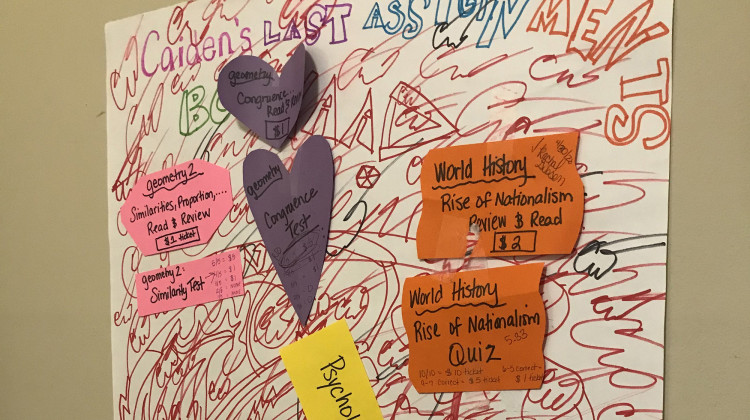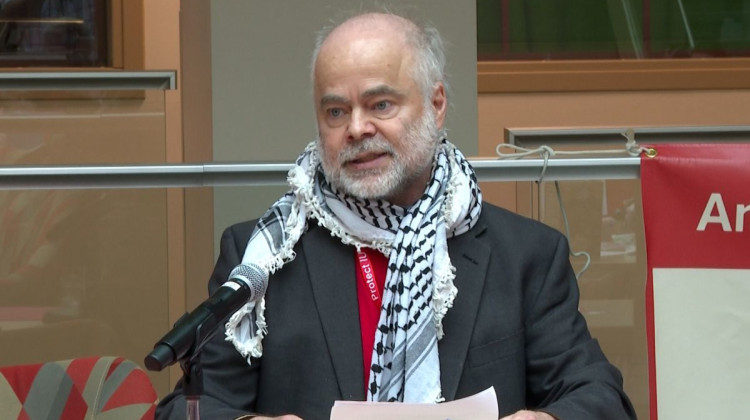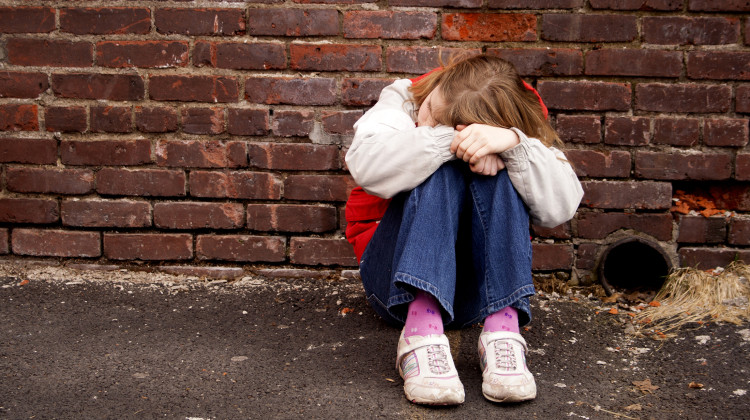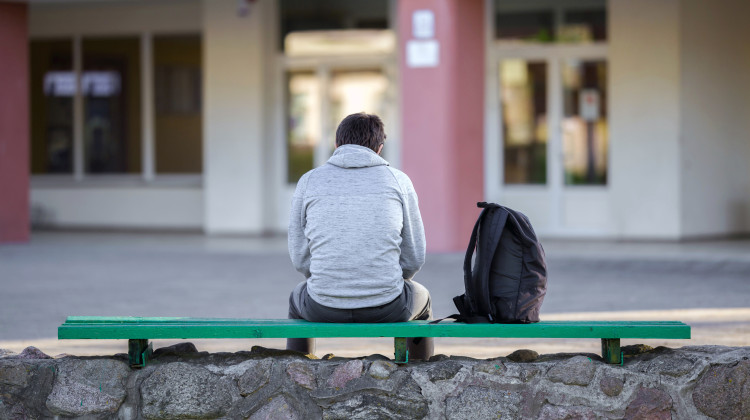
Families and schools have been forced to explore different options for students during COVID-19, and advocates say it’s important to continue that creativity to support students with unique needs after the pandemic ends.
Provided by Brandi WetheraldFor special education students and their families, finding the right materials and support in schools can be difficult, but the pandemic is forcing schools to rethink what learning looks like – and how it’s delivered.
Susan Cobb is the director of Covered Bridge Special Education District – a special education cooperative in Terre Haute.
“Not even not just special ed, but other areas in our school corporation, we're going ‘well, gosh, we just do this because we've always done it,’” she says.
Cobb says the shift to remote learning has been tricky. One of the districts she works with wasn’t using e-learning before the pandemic hit.
“This idea of video conferencing or streaming – it just didn't cross my mind. It wasn't something I thought of,” she says.
But Cobb says some of it will likely stick. Video streaming could connect some of those students with a unique program or service located somewhere off campus – and that’s important, she says, especially if the service would otherwise be inaccessible because of the time or money it would take to get there.
“And now I sit here thinking, man, we could certainly serve that student in that family better by thinking outside of the box and doing this,” she says.
Advocates say that creativity and urgency for schools to explore different options is vital for students and families even after COVID-19. Many families can describe emotionally and financially draining experiences negotiating for special education services, moving schools completely, or filing formal legal complaints to get them.
Join the conversation and sign up for the Indiana 2020 Two-Way. Text "elections" to 73224. Your comments and questions in response to our weekly text help us find the answers you need on COVID-19 and the 2020 election.
According to the state, about 15 percent of Indiana’s school kids have some kind of disability.
Kim Dodson is the ARC of Indiana’s executive director. It’s an advocacy organization for people with disabilities. She says schools should “absolutely” be looking at this moment as a learning opportunity.
“I think the flexibility of some of the guidelines that has now been allowed to take place through the COVID crisis, I think some of that is being really, really well received by students and families in some areas,” she says.
That’s why she says it’s critical for schools to offer those options after the COVID-19 crisis ends. It’s not possible to recreate everything using video or remote tools, especially social learning, but she says it could really help some kids now that they’ve tried it.
“There are some students who are performing and really thriving in the e-learning environment because they don't feel the pressure of being surrounded by bodies. And so they feel much more comfortable participating in class through this type of remote access,” she says.
To provide more students increased access to remote learning, many schools are focused on buying wifi and devices like laptops or tablets.
But Daniel McNulty, cautions schools against taking a one-size-fits-all approach. McNulty leads the PATINS Project, a special education resource center for schools.
“If you're buying one device for all kids, that's already the wrong answer,” he says.
He says it takes strong leadership to make long-term changes.
“I think that's my biggest fear is that there won't be enough leadership and grassroots educators willing to say, ‘Yeah, I know, that's how we did it before. But we've really just showed ourselves that's not that's not necessarily the best way to do it,’” he says.
A cheap and clear option, he says, is for schools to build concepts like universal design and accessible learning materials into hiring, evaluation and training policies for educators.
“I don't think that that really takes a lot of funding. I think it takes a lot of, culture shift and mind shift,” she says.
And for administrator Cobb, things are certainly shifting. She says families have asked to continue some remote learning services even after school buildings reopen.
“We are recognizing that there are families out there who need this service – either out of fear for current situation, or they think it's a better fit now that they've kind of been forced to stay home and do learning this way,” she says.
But whatever education ends up looking like moving forward, Cobb and others hope the creative momentum spurred by the COVID-19 pandemic doesn’t go away with the crisis.
Contact reporter Jeanie at jlindsa@iu.edu or follow her on Twitter at @jeanjeanielindz.
 DONATE
DONATE






 Support WFYI. We can't do it without you.
Support WFYI. We can't do it without you.